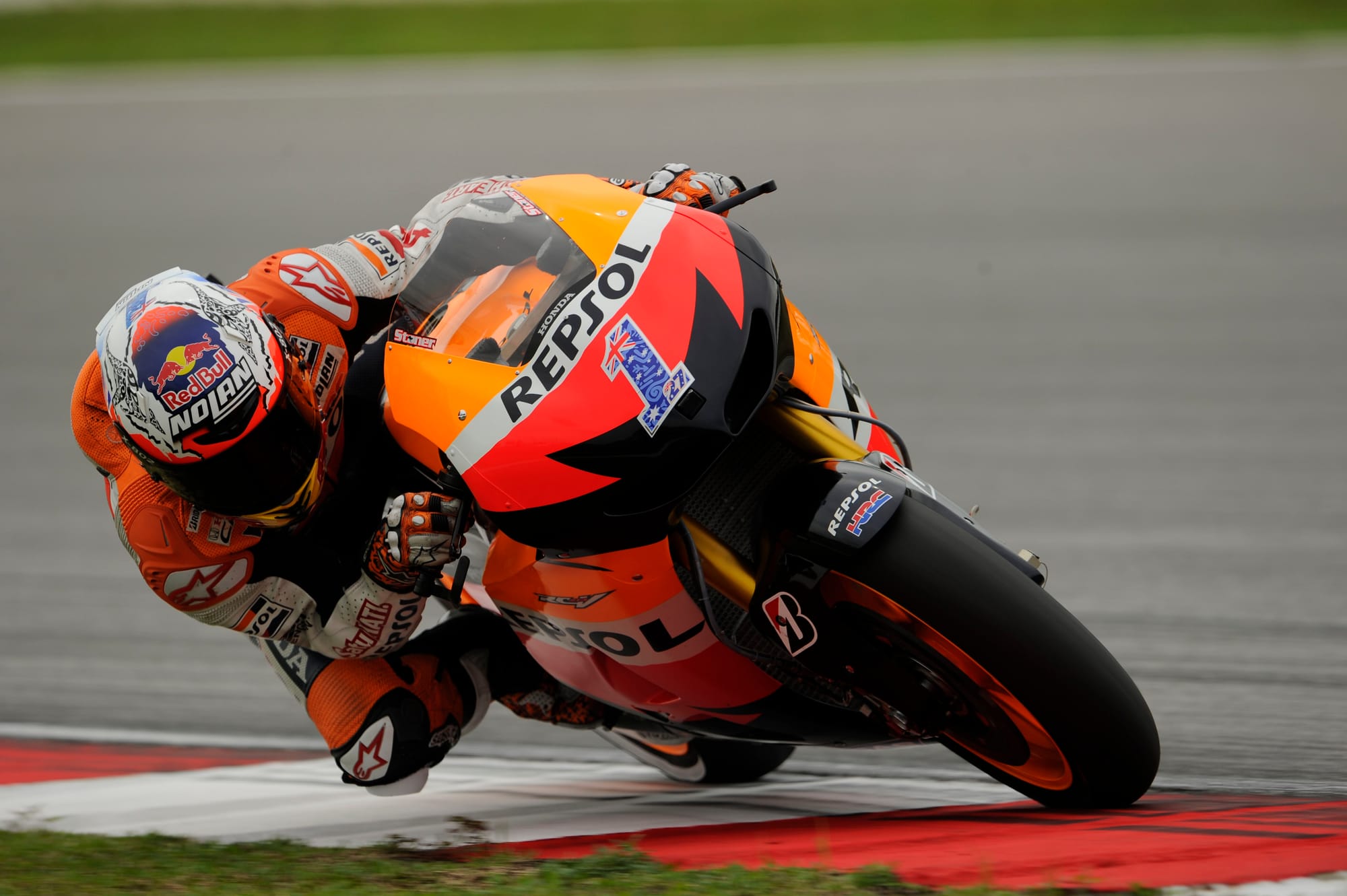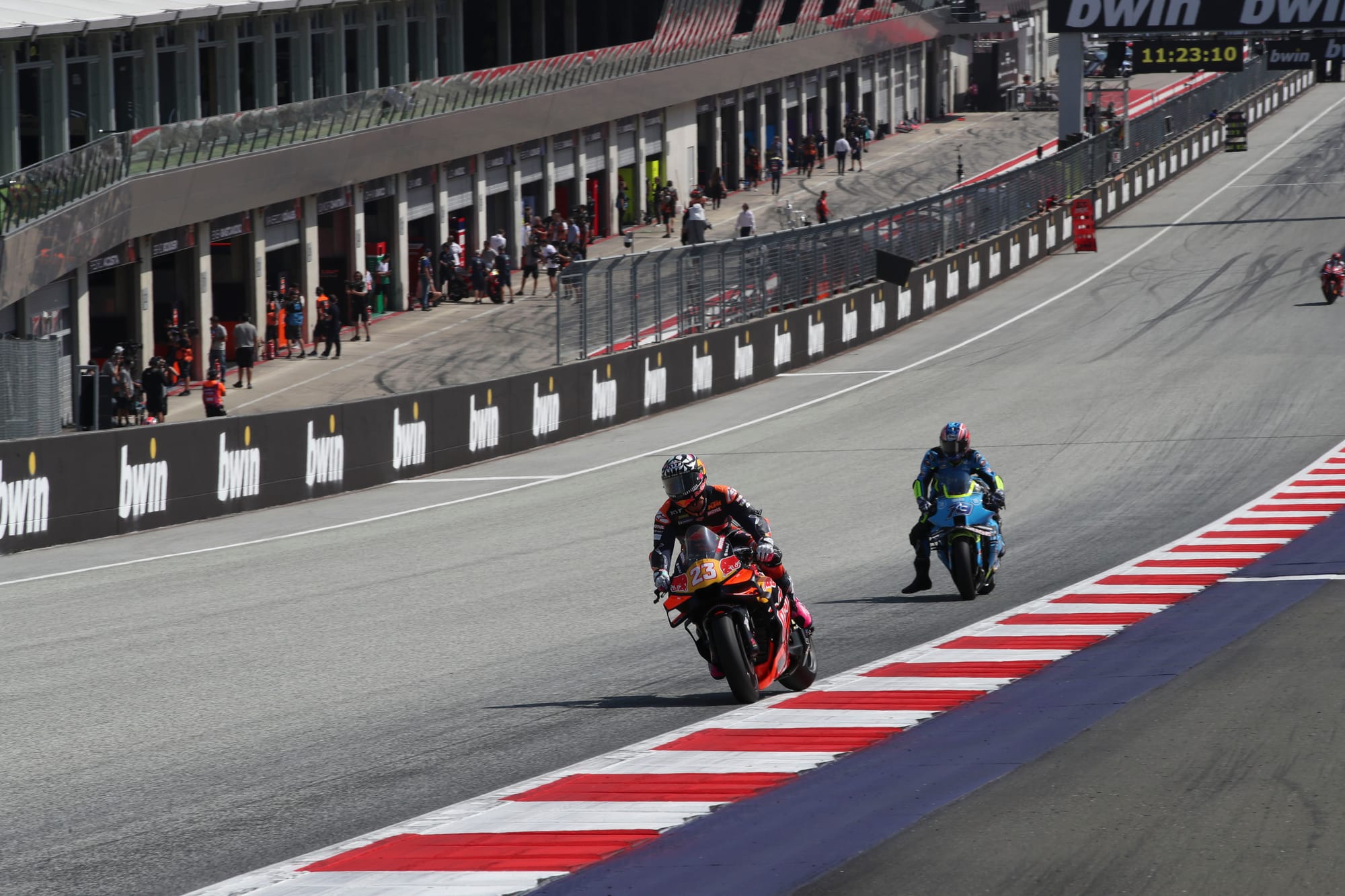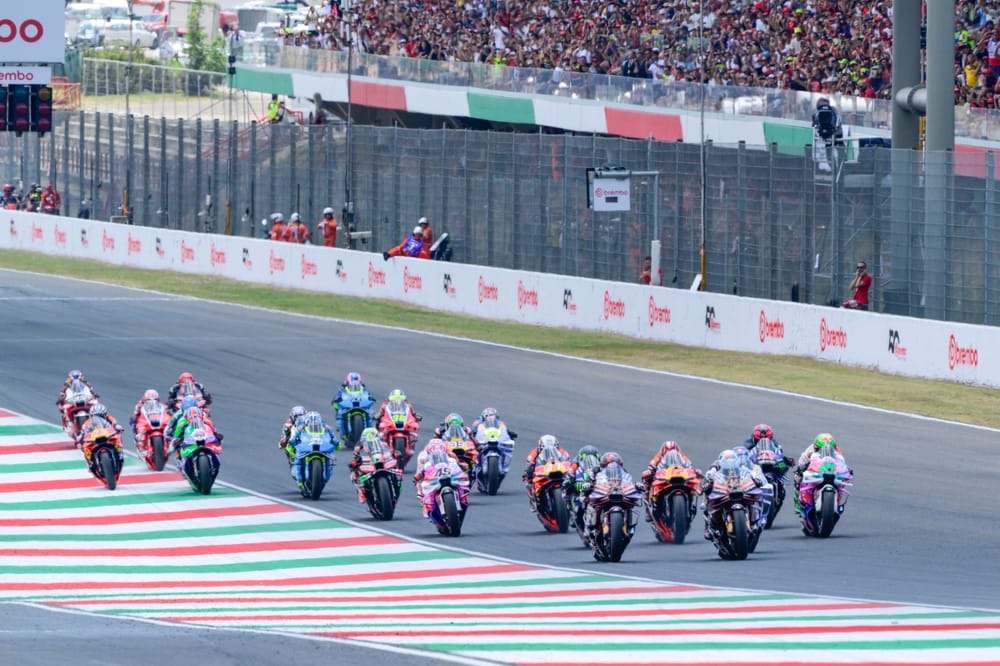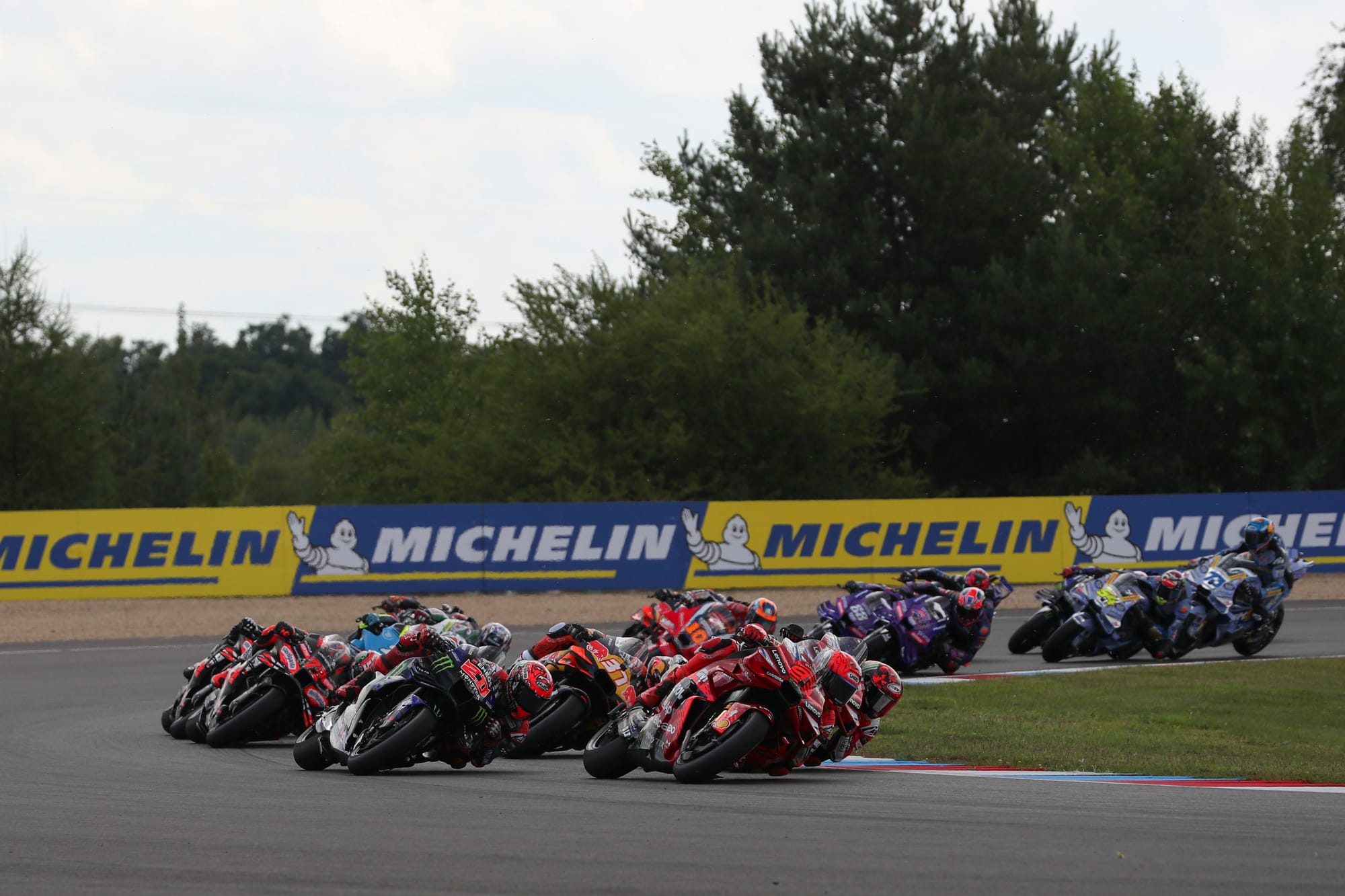Two-time MotoGP champion Casey Stoner believes the series' new 2027 rules don't go far enough towards improving the spectacle or making grand prix motorcycle racing safer - and instead could make it more dangerous than it is currently.
A big part of MotoGP's major rules overhaul involves moving to lighter, 850cc-engine machines in just over one year's time.
Stoner has been openly critical for some time of the direction in which MotoGP has been moving since his departure at the end of 2012, believing that modern electronic assistance aids are far too generous in the safety net that they provide for racers - and that that in turn causes a higher level of danger by encouraging riders to rely upon the software.
Stoner's latest comments came as he spoke to media at the Austrian Grand Prix, where the championship has unveiled a new form of control software designed to reduce slides as well as wheelspin, a move that commercial rights holder Dorna says is designed to make MotoGP safer by reducing highsides such as the one suffered by Pecco Bagnaia on the opening lap of the 2023 Catalan GP.
"Speaking to the riders, you can literally go and twist the throttle. You've got nearly 300bhp and you can twist the throttle, nothing happens," Stoner said.
"You've got the best riders in the world riding the easiest bikes to ride in the world. And I don't see this as being anything that I'm interested in.

"It was something that I was fighting already back in 2012, that I really just did not enjoy riding the bikes and the amount of control that they took away from me. And yet we've got to this point now where they're just this weekend putting a heap more on.
"Why? Where's the reason in that? Certainly not safety, because I haven't seen this championship get safer in these last years. I think last year or the year before, half the grid was out with injury. That's not safer. I think it's safer if you highside a bike and have a bit of an injury or a bit of a scare, that is going to keep you a little bit more safe, a bit more tame.
"But when you've got nothing to be scared of and you just trust it, that's when things are bad. The only area they can really make a big difference is under brakes, which then they start to having to push all limits."
And while Dorna might insist that the new software will make MotoGP safer, Stoner said that it's solving a problem that isn't really an issue - and that if Dorna really wanted to make MotoGP safer, it should be concentrating not on electronic rider aids but on slowing down the approach to corners instead.
"We've got worse accidents I think than we've ever seen in MotoGP," he added, "yet somehow these bikes are 'safer'. I don't see it as being safer.
"If you take all of the, let's say, control out of the rear of the bike, you lose any fear of the bike. And then you just start to push harder and harder in one aspect, which is the front end.
"And then if you lose the front end, so often when you lose the front it comes back onto the track. And we've seen catastrophic accidents when you lose the front end of the bike and it comes back. The more safe you make the rear, the worse it's going to be on the front. And then we're going to see worse things again.

"Also, your top speed at the end of the straight gets faster again. The margin for error in braking points is tiny. And then you have everybody absolutely on the limit in this area, and when you're carrying such speed, this is why you've seen so many bikes end up in the fence at the end of these straights.
"There needs to be a point where we stop adding all of this stuff, we stop making it easy to come out of corners, because having anti-wheelie, stopping the bike from wheelieing, isn't a safety issue. That's a convenience.
"Right now we're making champions out of engineers, we're not making champions out of riders. And we're going into an era of all the mistakes that F1 made."
And while MotoGP is introducing new rules in 2027 that are in theory designed to slow down the bikes and to make the racing safer again, Stoner said he does not believe it will achieve that without substantial reductions not to horsepower but to the aerodynamics.
"Not even close," he stressed, when asked by The Race if the 2027 rules go far enough. "Not even remotely close.
"You're making the bike lighter, so then the braking point becomes less.
"You're actually going to be slower at the top speed because they don't have this ride height device now, so it's going to be less top speed, which means a lighter bike, going into the corner, braking points are shorter, less opportunity for overtaking.
"They've still got winglets and they're going to be carrying probably higher corner speeds as well. So that's going to create turbulent air on a lighter bike, they're still going to be having stability issues, they're still going to be having tyre temperature issues.
"I just don't know how nobody can see the problems, that each step they do in this direction is making it go the wrong way.
"There's enough information out there and enough proof to know they're going in the wrong direction. I just think it's who they're listening to inside of - whether it's MSMA [the Motorcycle Sports Manufacturers Association] or what directive is actually pushing this. Because, like I said, we've had all these examples in the past of these things not working.
"Yet we're just following, in all of the directions of every issue that F1 has spent years getting rid of. And in my opinion they've done a very good job of creating racing and creating an incredible championship on something that, realistically, shouldn't be in comparison.
"Those cars are big and wide, yet we actually get to see some racing now. Yet these bikes, we're seeing less racing than in the past."




